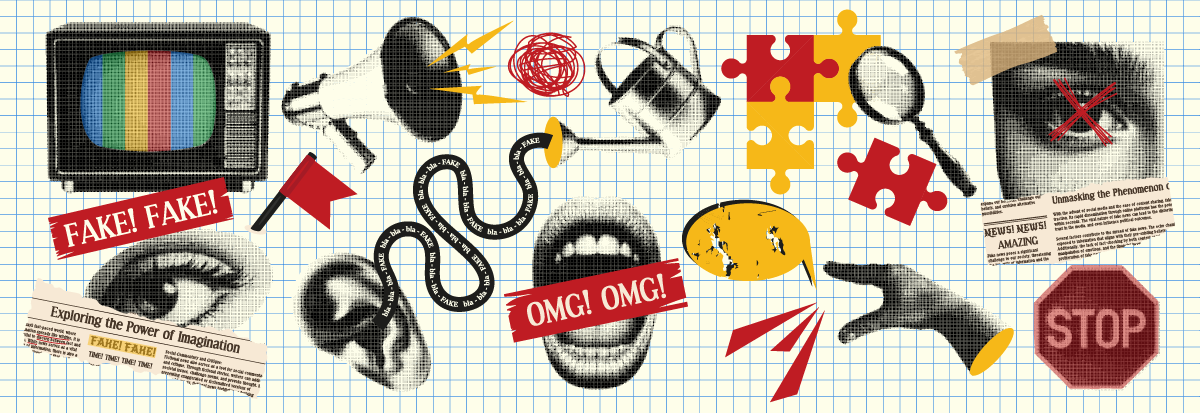Notes From the Studio
*
Notes From the Studio *

Choosing Zero: When Not Showing Up Costs More Than You Think
Record online spending and mobile-first buying made this season a nonstop marketplace. Sitting out isn’t neutral—it’s choosing zero. For small and independent brands, the edge isn’t deeper discounts; it’s connection. Show up with human stories, small incentives, and donation-driven offers—and use the rush to learn. The difference between zero and something is momentum.

The Myth of Neutrality: When Silence Becomes Neglect
Neutrality in public communications often functions as neglect. Silence lets false narratives harden into reality. Leadership means showing up early, correcting the record, and speaking plainly—even when it risks bad optics. Transparency, not polish, sustains trust: say what you know, what you don’t, and what happens next in communities served.

The Transparency Threshold: How to Talk When Things Go Wrong
The Transparency Threshold: How to Talk When Things Go Wrong explores how brands can maintain trust when holiday chaos strikes. From shipping delays to vendor failures, Frances Eugenia breaks down the anatomy of an honest update—acknowledgment, accountability, and next steps—and why silence does more harm than any mistake. The first 24 hours after a crisis are crucial; you don’t need every answer, but you do need to show up. Transparency isn’t about perfection—it’s about proving you’re listening, taking responsibility, and keeping people informed. Whether it’s a missed delivery or a seasonal backlog, the way you communicate defines the experience as much as the outcome.

What You’re Really Selling
Trust isn’t a bonus for good marketing — it’s part of the product itself. No amount of segmentation, automation, or deliverability strategy can cover for a broken experience. When a product disappoints or a customer service email goes unanswered, the promise collapses, and the message becomes a spotlight instead of a bridge. According to Salesforce, 88% of customers say the experience a company provides is as important as what it sells. Every quick refund, kind reply, and honest update is a reason to stay loyal; every missing refund or late response erodes belief. Real deliverability starts long before the inbox — in how well your product and service deliver on their word. Because you can’t automate sincerity or A/B-test your way into integrity.

The Real Gift: What Survives the Season
We’ve spent the last few weeks doing the quiet work—clearing space, re-earning permission, finding rhythm, and building calm into our cadence. Now comes the payoff: deliverability.
By late October, holiday volume rises and filters tighten. The steps we’ve practiced—sundowning inactives, pacing sends, planning quiet weeks—build more than organization. They build credibility, and credibility gets your messages through. Roughly one in five legitimate emails won’t reach the inbox during peak season; discipline is what tilts the odds.
If you’ve done the groundwork, you’ve earned deliverability—and that’s both technical and emotional. Every clean send, deliberate pause, and respectful opt-out teaches your audience that you’re paying attention. You’ve chosen calm over chaos in a season that rewards noise.
Deliverability is a metric, but it’s also a mirror. It reflects how carefully you’ve tended the relationship. The real gift of a clean list isn’t open rates; it’s trust—and trust travels farther than any December sale.

The Power of Pause: Where Trust Breathes
Silence isn’t absence—it’s strategy. Learn how intentional pauses in your communication protect trust, improve engagement, and give your audience space to breathe this busy season.

Soft Signal, Steady Send: An Email Cadence You Can Keep
After you clear the cobwebs and re-invite the willing, the work is rhythm—not volume. Set a base beat most weeks (one useful message, same day/time), swap in true accents when they’re earned, and protect intentional rests. Back it with deliverability discipline, plus simple caps and a six-week editorial view. Rhythm isn’t aesthetic; it’s ethics. In government it steadies trust; in business it steadies attention. Build a pattern people can live with, and pause on purpose. The result isn’t louder email—it’s dependable presence people welcome.

When the NFL Met Abercrombie: Rebrands, Relevance, and the New Rules of Cultural Partnership
The NFL naming Abercrombie & Fitch its first official fashion partner is a culture story. Two legacy brands are betting that relevance now comes from co-creation. Abercrombie brings fit, feel, and fashion discipline; the NFL brings ritual and reach. Same signal with Bad Bunny’s Super Bowl booking: a league choosing cultural fluency over nostalgia. If the clothes read as weekday wardrobe and players show up as authors—not mannequins—this isn’t a logo play. It’s identity realignment. The message is that in a multilingual, style-forward America, authenticity is the new margin.

Clear the Cobwebs: Re-Engagement, Segmentation, and the Art of Sundowning
Before the holiday inbox chaos hits, take time to reconnect—not just clean. Learn how segmentation, re-engagement, and sundowning can strengthen deliverability, protect trust, and help your messages reach the people who truly want them.

Bad Bunny, the Super Bowl, and Who Gets to Be “American”
When the NFL tapped Bad Bunny to headline Super Bowl LX, the backlash was instant and tired. The same “This is America” refrain, as if Puerto Ricans aren’t American or as if English is a citizenship test. But the data—and the culture—tell a different story. Spanish is the second heartbeat of this country, and Latino fans are already reshaping U.S. sports. Bad Bunny’s halftime isn’t politics. It’s product strategy.

The Gift of a Clean List: Beat Holiday Inbox Fatigue
October is the quiet window before inbox chaos. Use it to tidy your lists, pace your sends, and rebuild trust. Start where impact is highest—prune the list, then lock the rhythm. A gentle sundowning protocol respects attention and protects deliverability. Keep the cadence light, steady, and human: one meaningful message most weeks, a small spotlight here and there, and intentional pauses. Fewer, better emails go farther than a December barrage.

Continuity by Design: The Discipline of Building Communications That Outlast You
Continuity isn’t housekeeping—it’s stewardship. Logos and templates won’t save a department built on personalities instead of practices. When systems fail, residents feel it first: unanswered requests, slipping participation, and trust that’s hard to win back. This piece lays out a discipline of design—governance, shared access, documented workflows, true source-of-truth calendars—so communications keeps working when people change. Turnover isn’t failure; it’s inevitability. The measure of leadership is what still runs when you’re gone.

Why Public Records Cadence Is a Crisis Communications Strategy
In municipal government, transparency isn’t only what you release—it’s when. Cadence is a crisis tool. A steady, well-framed rhythm of public records releases keeps the narrative anchored to facts you can stand on, instead of leaving space for rumor and performative outrage. Dump everything at once and people tune out; trickle inconsistently and they assume you’re gaming the clock. The fix is practice, not vibes: tier your cadence (normal → heightened → crisis), pair every drop with a plain-language summary and FAQ, and end with “next update on ___.” Document the triggers, roles, and review SLAs in your crisis communications playbook so cadence survives leadership changes and pressure. When the city defines the beat, it owns the tempo of the crisis—and the trust that follows.

Attention Is Power: Who Spends Our Money When We Don't?
When only a quarter of us show up, rumor becomes “record” and power moves in quiet rooms. If taxation feels like theft, apathy is the getaway driver. The real question: how do we make participation possible—and worth it—for people already stretched thin?

The Quiet Work of Telling the Truth
Why naming who did what—and when—is accountability, not a campaign.
There’s a moment almost every week when someone scolds our Cleveland Heights channels for sounding “partisan.” It usually follows a post full of numbers, dates, and proper nouns—a road resurfaced and paid for, a grant awarded, a contract executed. The verdict arrives: de-politicize your newsletter, as if facts printed on City letterhead are campaign slogans in disguise. Talking plainly about city work isn’t politics; it’s accountability. I know that in a season charged by a mayoral recall effort, facts can feel inconvenient to those invested in a different narrative. But the remedy for tension isn’t silence—it’s specificity, documentation, and an open file cabinet. Facts don’t campaign; they timestamp.

When the Record Is Refused: From Content to Erasure
Public records are meant to be the conscience of local government — a shared foundation for accountability. But in Cleveland Heights, I’ve watched that foundation fracture. First, records were turned into content: fodder for outrage, clipped and spun until spectacle replaced substance. Now, the injury runs deeper. The record itself is refused — excluded, dismissed, or framed as dishonest at the moment of its creation.
When that happens, the very possibility of shared truth collapses. The role of municipal communication is no longer just to clarify but to ensure survival: to keep the record visible, accessible, and enduring even when others would prefer it disappear. Holding the line means carrying the record forward — not once, but over and over — until it becomes part of civic memory.

The New Bloodsport: Public Records as Entertainment

Last-minute luxury — Retreat into your senses

Jakey T's creative odyssey
